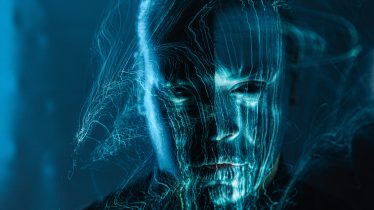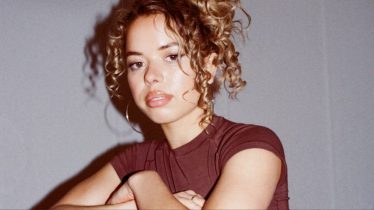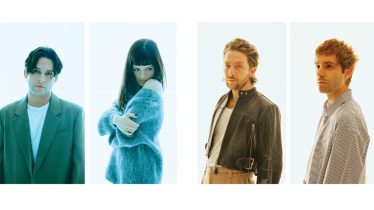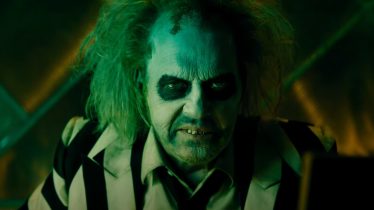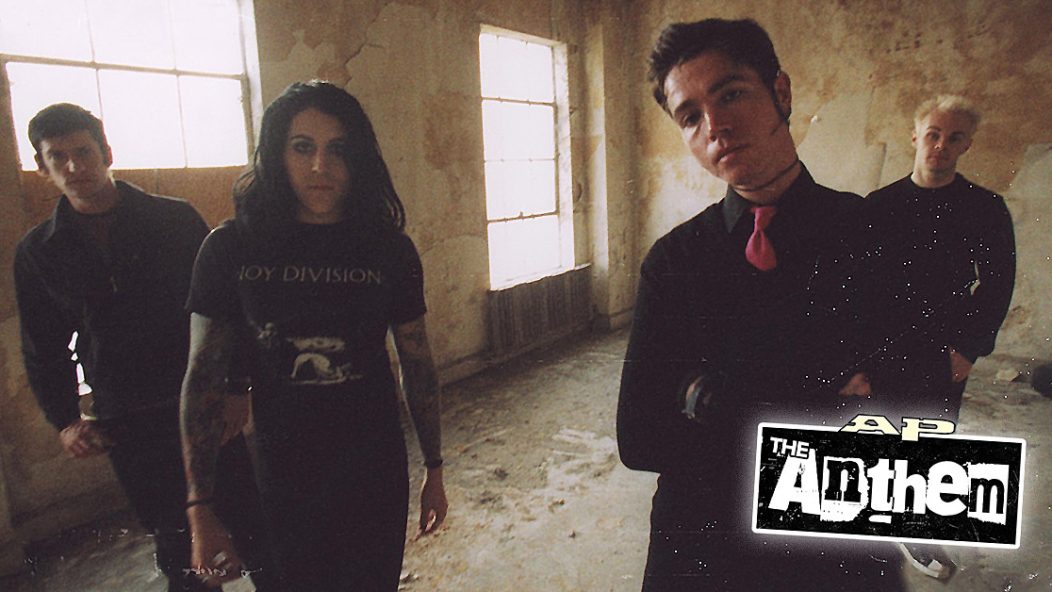
AFI reflect on creating their breakthrough hit “Girl’s Not Grey” 20 years later
This is The Anthem, where we’re telling stories behind classic songs by interviewing the people who were really there. This week, we’re touching on AFI’s riotous 2003 single “Girl’s Not Grey.”
In 2003, the bases were loaded for Bay Area hardcore punks AFI. Following the release of five genre-defining albums on the indie powerhouse label Nitro Records, AFI decided to make the jump to the major leagues of DreamWorks Records for the release of their sixth studio album, Sing The Sorrow.
The release propelled them from the humble stages of sweaty punk clubs like 924 Gilman Street to massive arenas, where they’d become mainstream rock darlings who would dominate the airwaves of MTV and TRL for years to come. Possessing a more post-hardcore, goth, and, at times, new-wave sound, Sing The Sorrow served as a perfect transitional record for the beloved group as they ventured into more melodic and accessible territory.
Despite being written at the eleventh hour, the album’s lead single, “Girl’s Not Grey,” ended up being the group’s mainstream breakthrough release and went on to become one of the most recognizable songs in their catalog, which remains a permanent staple in their riotous live shows to this day. In the early ‘00s, “Girl’s Not Grey” was almost inescapable, as the music video directed by David Slade (who’s since directed movies like The Twilight Saga: Eclipse and 30 Days of Night) constantly played on MTV. The frequent programming made sense, because not only was the track itself a hit, Slade created a stunning, Alice in Wonderland-inspired concept and set design that captured the band’s unparalleled gothic aesthetic, and even helped to introduce recurring themes and characters that became central pieces in AFI’s unique brand of imagery.
Centered around melodic guitar lines, locked-in rhythm sections, gang vocals, and the impressive range of the band’s inimitable frontman Davey Havok, “Girl’s Not Grey” could hold a candle to any pop song that was dominating the radio at the time, while still satiating even the most punk purists. Havok’s poetic wordplay, while dark and ambiguous, managed to captivate listeners with ease — even if the majority of people singing along weren’t certain they knew what the song was really about.

[Photo by Matthew Welsh]
The genesis
JADE PUGET (GUITAR): This song is actually different from any other song on [Sing The Sorrow]. We had basically finished writing the record, but at the very end, we decided we would try to write one more song. I needed a change of scenery to get into a different headspace, so I went to Toronto, Ontario to write some more and thought if nothing comes from it that’s fine, because we already had a cool record already. I sat in a hotel room for a few days and wrote the music of the song, as well as the [verse] melody, and came back with just that and showed it to Davey [Havok]. From there, he wrote the lyrics to the verse and I helped come up with the call-and-response thing [in the chorus].
ADAM CARSON (DRUMS): Being the first single [for the album], we wanted the song to showcase everything that AFI is and was at the time. It’s a melodic, anthemic chorus with the gang vocals, and it’s an up-tempo song that has a pacing that was probably a little bit faster than a lot of stuff on the radio at the time. With the quieter, moody, broken-down middle-eight, it’s really all the hallmarks of the band at the time. It’s a song that really works as the first song in a set, which is why I think we’ve played that song probably more than anything. It’s funny because as I am rehearsing and preparing for the Sing The Sorrow anniversary show we are playing [next month], I’m always shocked when I see that “Girl’s Not Grey” is the sixth song on the record.
PUGET: I believe that I voted for it to be the first song on the record, but I was the only one.
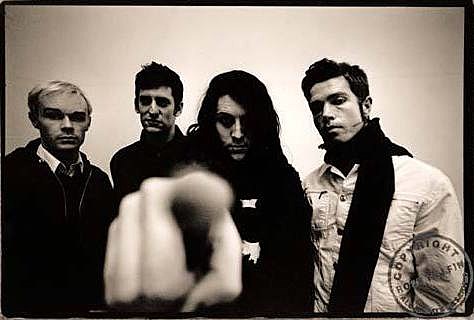
[Photo by Ross Haflin]
The lyrics
PUGET: It’s hard to speak for [Davey], but I know that his intentionality is usually clouded in mystique as he wants it. He doesn’t put ideas out there that can be easily parsed and he’s one of those “you figure out” kind of guys. I always thought the song’s chorus was kind of funny because the lyrics say, “What follows, just begs to be imbrued,” and imbrued is not a word anyone ever uses. For a song on mainstream radio that has these bizarre, opaque lyrics, I’m surprised it did as well as it did. No one wants to sing along to a word like imbrued.
CARSON: I’ve been singing those backing vocals for 20 years now and my wife recently asked me what the lyrics were and I realized I didn’t quite know. I had become so conditioned to singing the melody and cadence of those lines but not really knowing what I was singing.
PUGET: There are a few AFI songs that I’m sure that I’m probably just singing my own made-up lyrics to. [Laughs.]
The music video
HUNTER BURGAN (BASS): I remember [the director] David Slade carried around this little notebook with drawings of rabbits because rabbits were his thing. At the time, Davey was also heavily into rabbits, so they instantly bonded over that and knew we had to have them in there somehow.
CARSON: It was our first time ever making a real big-budget music video. We didn’t know what to expect going into it, but walking into the soundstage and seeing the giant set that was constructed with the hills and psychedelic landscapes with the red and trees was pretty full on. It was exciting to be a part of something that felt so big.
PUGET: I will say with the red, the leaves, and the hills, it was a really beautiful set, especially in person. Compared to the other part where we’re painted black, which was kind of janky, the [set] part was really cool. I remember David Slade having a lot of nervous energy, and he used to chew on his sweater, which I think was a way for him to harness his nascent inherent energy.
CARSON: The bunny that is featured in the video was actually worn by an actor, and we recently unearthed the bunny suit in a storage locker at our management’s office, so we gifted it to the Punk Rock Museum that is opening in Las Vegas.
PUGET: For $1.99, you can wear it and walk around the museum.
CARSON: I also remember the actor who was playing the bunny took some steps and tripped over something and sort of fell in slow motion. The whole time he was starting to fall, you could hear this bunny going, “Oh shit, oh shit, oh shit.”
